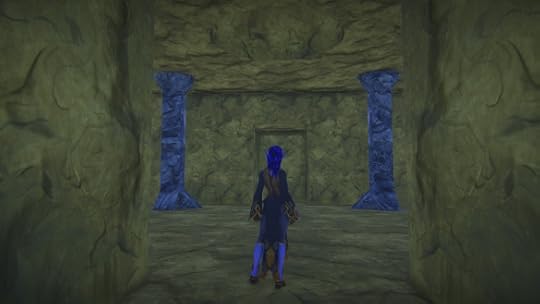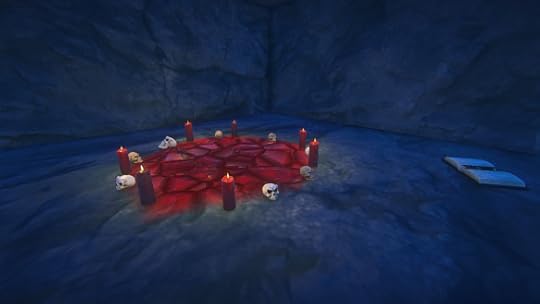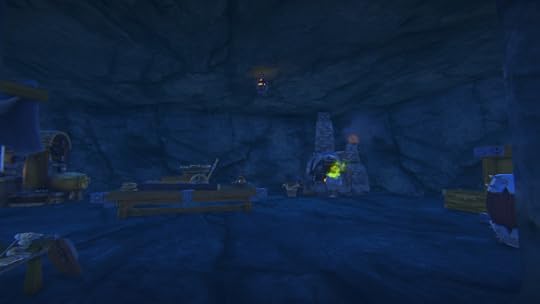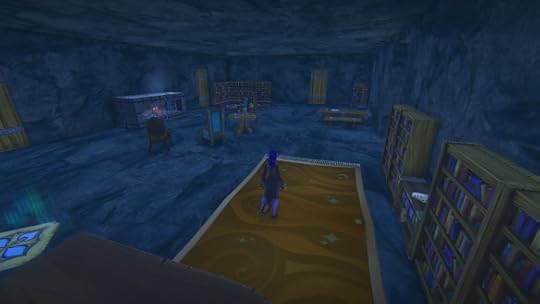Tyler F.M. Edwards's Blog, page 47
October 25, 2016
My Top Five Games: Old School
I’ve long been tempted to do a post about my all-time favourite video games on this blog. Given how much I talk about gaming, it seems strange I haven’t.
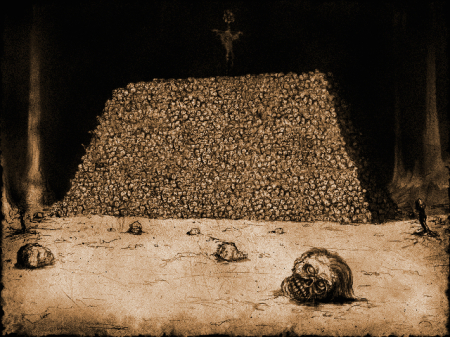 One of the main stumbling blocks has been decided how to rate older games against newer ones. Many recent games are objectively better than their older equivalents in many key ways, but a lot of that is due to the march of technology. Is it right to hold that against older games?
One of the main stumbling blocks has been decided how to rate older games against newer ones. Many recent games are objectively better than their older equivalents in many key ways, but a lot of that is due to the march of technology. Is it right to hold that against older games?
I’ve decided to side-step the issue by simply not comparing apples to oranges. I’m going to do two separate lists ranking my favourite older and new games, with the period in my teens where I temporarily quit gaming serving as the divider between the two eras.
We start at the beginning, with the old school greats.
5: Dungeon Siege
There are a couple games I could mention here — Age of Kings is also a strong contender — but I chose Dungeon Siege because it marks an important turning point where my view of the RPG genre began to change.
By modern standards — and to some extent even by the standards of the time — Dungeon Siege was an excessively simplistic game, but I was just so refreshed by the idea of an RPG that got out of its own way and tried to simply be a fun adventure, rather than the clunky grindfests most of its competitors were at the time.
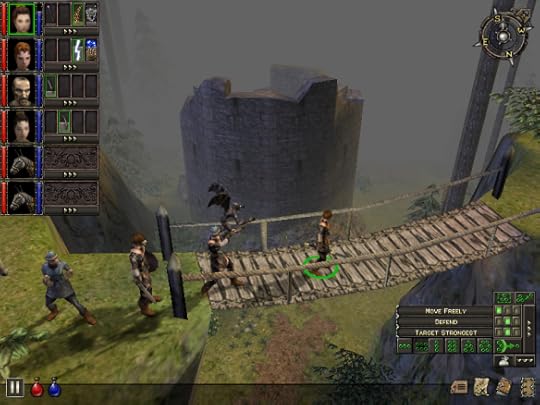 Its focus was on the action, not the character sheet, and the developers worked hard to make the gameplay as smooth and free of annoyances as possible. Auto-loot alone felt like a revolution at the time.
Its focus was on the action, not the character sheet, and the developers worked hard to make the gameplay as smooth and free of annoyances as possible. Auto-loot alone felt like a revolution at the time.
It also offered gorgeous graphics (for the time, and even today the environments hold up well), an excellent soundtrack, and some very interesting backstory and world-building.
Also, pack mules.
4: Myth II: Soulblighter
There are people out there who are very cynical about the current state of the gaming industry. They’ll swear up and down that today’s games can’t hold a candle to those of yesteryear.
I vehemently disagree with this perspective, but there are still a handful of older games that haven’t been equaled, even today. The Myth franchise is one example of this.
Myth was something very unique. It was an RTS, but there was no economic management. You were given a set number of units and an objective and simply set loose in the wilderness to survive as best you could — usually against almost impossible odds.
 It also featured a hyper-realistic combat engine unlike anything I’ve ever seen in gaming. The wind blew arrows off course, rain caused grenade fuses to fizzle, body parts rolled downhill. This ruthless commitment to realism was one of the main contributors to Myth’s intense, frankly excessive difficulty, but often failure was so spectacular it became part of the games’ charm.
It also featured a hyper-realistic combat engine unlike anything I’ve ever seen in gaming. The wind blew arrows off course, rain caused grenade fuses to fizzle, body parts rolled downhill. This ruthless commitment to realism was one of the main contributors to Myth’s intense, frankly excessive difficulty, but often failure was so spectacular it became part of the games’ charm.
The story and lore were also wildly unique, with an incredibly inventive take on high fantasy. Traditional elements like Dwarves and sorcerers co-existed with entirely new creations like the horrific Myrkridia, the immortal Trow, and the alien Fetch. Inspiration was drawn from unusual sources, like Gaelic and Mesoamerican cultures. The Mayan-samurai Heron Guard remain my all-time favourite interpretation of the paladin archetype.
And there was such depth. One common sin of video game story-telling is that developers only create enough lore for whatever story they want to tell, but Myth created a vast and detailed world whose history and geography we saw only a fraction of during the games.
The Fallen Lords was excellent, but its sequel, Soulblighter, was even better. Deeper gameplay, an even more intense story, and a grander adventure all around.
I’ve said it before, and I’ll say it again: You just have to respect a man who ripped out his own heart and cut off his own face “in a ritual too dark to name.”
3: StarCraft
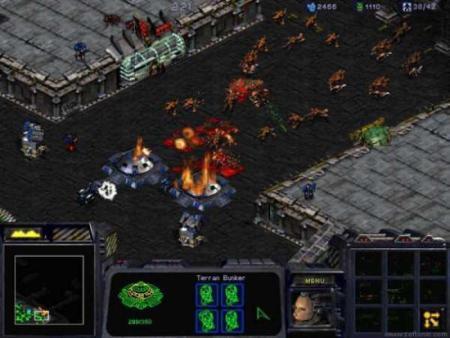 The 90s and early 2000s were the golden age of the RTS genre, and Blizzard was its master. StarCraft, in particular, was a revolution in strategy gaming.
The 90s and early 2000s were the golden age of the RTS genre, and Blizzard was its master. StarCraft, in particular, was a revolution in strategy gaming.
There had been RTS games with differing factions before, of course. Dune II beat StarCraft to the punch on the idea of three playable factions. But its factions were nearly identical, with only a handful of unique units.
In StarCraft, each race is entirely unique from the ground up. Different units, mechanics, and strategies, and yet Blizzard was able to deliver a balanced game where each race could compete despite their wild differences.
StarCraft’s influence on gaming is undeniable. It was a major force in the rise of eSports, and it has forever changed the gaming lexicon. Even outside of Blizzard games, everyone understands the concept of a Zerg rush (kekeke).
But for me my memories are still of rushing home from school to play the campaign, giggling with my friends over the dragoon’s spam click quotes. It was a pillar of my childhood.
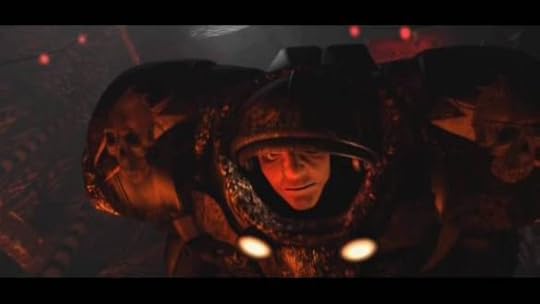 I don’t hold up the original StarCraft’s campaign as the masterpiece of sci-fi intrigue some like to paint it as, but it was on the whole a good story, and StarCraft has cemented itself as one of my all time favourite sci-fi franchises.
I don’t hold up the original StarCraft’s campaign as the masterpiece of sci-fi intrigue some like to paint it as, but it was on the whole a good story, and StarCraft has cemented itself as one of my all time favourite sci-fi franchises.
StarCraft is also notable for being the first game where I can remember really enjoying the soundtrack. The music may have been a little cheesy, but that didn’t make it any less fun.
Duh-na-na-na, duh-da-da-na, duh-na-na-na na-na-na…
2: No One Lives Forever: The Operative
Like the Myth games, No One Lives Forever was one of those rare games that even today hasn’t quite been surpassed. I’ve heard it said that NOLF was so ambitious and creative it simply never would have been made today, and I think there might be some truth to that. That or it would be some sprawling open world grindfest, a mile wide and an inch deep, rather than the vast but lovingly intricate game it was.
A delightfully campy homage to the spy craze of the 1960s, NOLF put players in the role of feminist super spy Cate Archer as she battled the twin threats of gender inequality and the terrorists of H.A.R.M. with a wide arsenal of guns, gadgets, and acerbic wit.
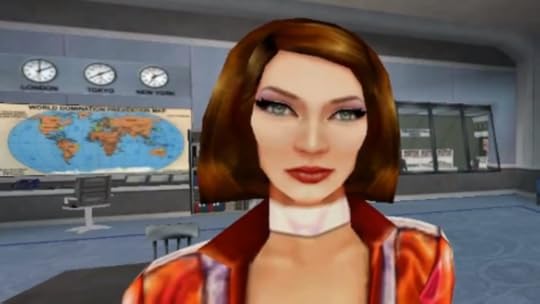 It featured some of the most wildly creative level design in gaming history. The most oft-cited example is the mission where you fall out of an exploding plane without a parachute, engage in a mid-air gun fight with H.A.R.M. paratroopers, and have to wrestle a parachute off one of the enemy goons before you leave a small crater.
It featured some of the most wildly creative level design in gaming history. The most oft-cited example is the mission where you fall out of an exploding plane without a parachute, engage in a mid-air gun fight with H.A.R.M. paratroopers, and have to wrestle a parachute off one of the enemy goons before you leave a small crater.
But NOLF’s massive campaign also took players to Switzerland, Morocco, east Berlin, the bottom of the North Sea, and outer space, among others.
NOLF was ahead of its time in a lot of ways. It was the first game I played with dialogue choices, as well as the first I played with something resembling a new game plus mode, which gave it huge replay value.
The stealth missions were irritating, but even so it stands as one of the finest games ever made.
1: Warcraft III: Reign of Chaos
The word “epic” has been abused a fair bit by the gaming community, but if you want a game that truly personifies what “epic” truly means, Warcraft III is that game.
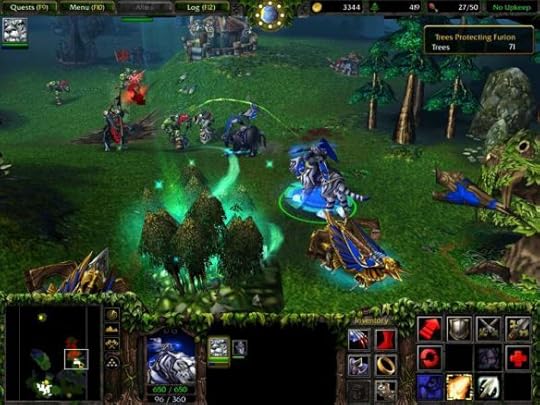 How good was the story in Reign of Chaos? Well, let’s put it this way. After seeing one cinematic, my mother — who has no interest in gaming or much of anything outside her own narrow field — insisted that I keep her posted on further developments, to the point of calling her down to watch the cinematics if she wasn’t busy.
How good was the story in Reign of Chaos? Well, let’s put it this way. After seeing one cinematic, my mother — who has no interest in gaming or much of anything outside her own narrow field — insisted that I keep her posted on further developments, to the point of calling her down to watch the cinematics if she wasn’t busy.
Prior to Warcraft III, the Warcraft universe had been tremendously simple. Fun, but simple. Reign of Chaos blew up everything we thought we’d known about Warcraft and created a vastly deeper, more complex world. It turned the Orcs into real people with a rich culture and intense inner conflict. It showed the once perfect Alliance crumbling from the rot within. It defied our expectations, it shocked, it inspired, and it ended with a powerful message of hope that would have been at home in the finest Star Trek episode.
And it was so damn epic. It truly felt like the war to end all wars, with the fate of everything on the line. The villains were terrifying. The heroes awe-inspiring.
Nor was the story its only virtue. As a video game, it also excelled. It all but created its own genre by hybridizing the very best aspects of both real time stategy and role-playing games. It was exciting, but not stressful. Challenging, but not unforgiving.
It took the focus away from tedious economic management and put it squarely on the action. Nothing in gaming can beat the satisfaction of casting exactly the right spell at exactly the right moment in Warcraft III.
 It was about as close to perfect as any game will ever be.
It was about as close to perfect as any game will ever be.
Honourable mentions:
There weren’t as many excellent games back in the day as there are now, but there are still a few others worthy of recognition. As mentioned above, the Age of ___ games were fantastic, another pillar of the golden age of the RTS genre, and Age of Kings, in particular, stole a lot of my childhood.
Later Age of Mythology sparked a lifelong interest in ancient mythology so intense I now have idols of deities from three separate pantheons watching over me from my headboard as I sleep.
Also on the subject of old RTS greats, the first two Warcraft games were also quite strong, even if Reign of Chaos ultimately eclipsed them. In a roundabout way they’re responsible for my becoming a writer, actually. The Elven archers ignited my love of Elves, which led them to be the focus of the make believe games I played with my friends, which evolved into an entire universe and mythology of my own creation, which led me to learn how to write so I could share these stories.
Also, while I think the franchise has long since lost its way, I do think the original Call of Duty was something of a masterpiece. It certainly gave me a deeper appreciation for the sacrifices of veterans than I’d ever had before.
Filed under: Games Tagged: Age of Empires, Age of Mythology, Call of Duty, Dungeon Siege, fantasy, Myth, No One Lives Forever, pointless nostalgia, sci-fi, Starcraft, Warcraft








October 22, 2016
Ranking my Bioware Romances to Date
There was a time I eschewed the romance options in Bioware games because I found the concept of in-game romance a little strange. I still do to some extent, but ultimately these games are story-telling simulators, and it’s just another kind of story. I’ve done enough of them now that I thought it might be interesting to rank them against each other, from worst to best.
Some notes on the scoring: I have tried as much as possible to be objective and to separate how much I like each character from how good their romance arc is. This isn’t a ranking of my favourite romanceable characters; it’s a ranking of how well-executed I found their romance stories to be.
I’m sure my preferences still influence the ranking, but I’ve tried to minimize it.
Leliana (Dragon Age: Origins):
 Leliana is the one romance I genuinely regret pursuing. I picked her because I loved the stories she tells (and because of the sexy accent), but she’s too churchy, and when you romance her she gets so smarmy it’s just intolerable after a while.
Leliana is the one romance I genuinely regret pursuing. I picked her because I loved the stories she tells (and because of the sexy accent), but she’s too churchy, and when you romance her she gets so smarmy it’s just intolerable after a while.
Plus, I wound up having a kid with Morrigan anyway, so in retrospect I really should have just romanced her.
Samantha Traynor (Mass Effect III):
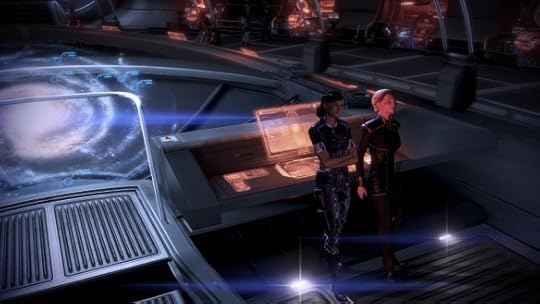 I don’t like giving a poor rating to Traynor’s romance. Traynor herself is awesome, and I’ll fight anyone who says otherwise. If Bioware had designed a character to appeal specifically to me, I doubt they could have done a better job.
I don’t like giving a poor rating to Traynor’s romance. Traynor herself is awesome, and I’ll fight anyone who says otherwise. If Bioware had designed a character to appeal specifically to me, I doubt they could have done a better job.
But if I’m being honest, the writing for her romance is terrible. There’s not much too it; mostly just minor tweaks to existing conversations, often involving awkwardly shoe-horned innuendo. The scene where you initiate the romance is so ridiculous I actually missed out on romancing her the first time through because I couldn’t believe the game actually wanted me to do that.
I still romance her on every playthrough, and to be fair, some of the scenes near the end are pretty good. But most of the time it plays out more like a cheesy porn parody of Mass Effect than anything, and turning Mass Effect into porn is supposed to be the Internet’s job.
Vector Hyllus (Star Wars: The Old Republic):
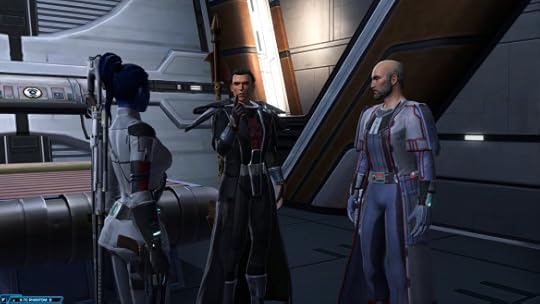 I’m not sure why Vector’s romance leaves me cold. He’s a very unique character — a human incorporated into an alien hive mind — and a very nice guy despite all his oddness. I can’t say anything bad about him, and his romance is written well enough, even if it’s a bit by the numbers (rather surprising given his alien nature).
I’m not sure why Vector’s romance leaves me cold. He’s a very unique character — a human incorporated into an alien hive mind — and a very nice guy despite all his oddness. I can’t say anything bad about him, and his romance is written well enough, even if it’s a bit by the numbers (rather surprising given his alien nature).
But for whatever reason I’ve already forgotten most of it, and it hasn’t even been that long since I did it. Maybe I just have trouble imagining Vector the soulful (if strange) romantic with my cavalier agent.
Kaidan Alenko (Mass Effect trilogy):
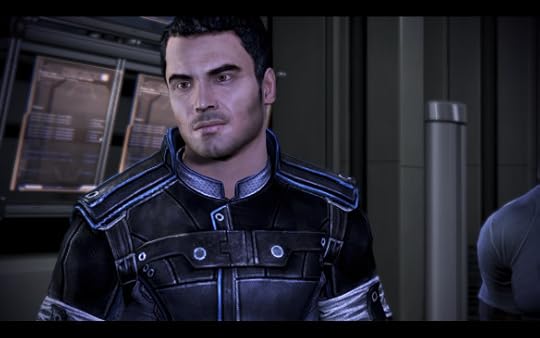 The problem with Kaidan is that he’s one of those characters who feels like he was written as a romance choice first and a person second. He’s very likable… maybe a little too likable. He feels like an archetype of romantic perfection, not a real person.
The problem with Kaidan is that he’s one of those characters who feels like he was written as a romance choice first and a person second. He’s very likable… maybe a little too likable. He feels like an archetype of romantic perfection, not a real person.
It is interesting to be able to continue the relationship with him over three games, and on the whole it’s a pretty well-written romance, but I can’t quite get over how unreal a character he seems.
Dorian (Dragon Age: Inquisition):
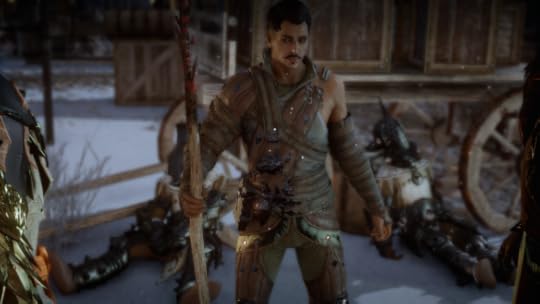 There’s nothing particularly wrong with Dorian’s romance, but not a lot about it stands out, either. It’s easy, and it’s sweet, and that’s about it. You learn a little more about what makes Dorian tick, but not much.
There’s nothing particularly wrong with Dorian’s romance, but not a lot about it stands out, either. It’s easy, and it’s sweet, and that’s about it. You learn a little more about what makes Dorian tick, but not much.
Dorian remains one of my favourite Inquisition characters, but romancing him isn’t really necessary. He’s just as awesome as a friend.
Vette (Star Wars: The Old Republic):
 My adoration of Vette is by now well-documented. She’s just an awesome, delightful character in every way. She’s a bit like Dorian in that her romance doesn’t seem to add a whole lot to her story, but given how incredibly sad and lonely her life has been, I do like the idea of being able to bring her some happiness.
My adoration of Vette is by now well-documented. She’s just an awesome, delightful character in every way. She’s a bit like Dorian in that her romance doesn’t seem to add a whole lot to her story, but given how incredibly sad and lonely her life has been, I do like the idea of being able to bring her some happiness.
I suppose on some level I like the idea of playing the white knight.
Lana Beniko (Star Wars: The Old Republic):
 Lana’s romance is a hard one to rate. It spans several games, and due to the nature of MMOs, it isn’t over yet. Arguably this is true of the other SW:TOR romances as well, but companions from the base game still seem largely abandoned, and those romances tended to have a clear conclusion — usually marriage.
Lana’s romance is a hard one to rate. It spans several games, and due to the nature of MMOs, it isn’t over yet. Arguably this is true of the other SW:TOR romances as well, but companions from the base game still seem largely abandoned, and those romances tended to have a clear conclusion — usually marriage.
It’s also hard to rate because Lana is such an unusual character. She’s unusual in the context of Star Wars lore — a calm and selfless Sith, practically an oxymoron — but also just an unusual character in general. She’s so enigmatic, outwardly dispassionate with only tantalizing glimpses of the fierce emotion within.
But her oddness is what makes her compelling. I keep saying I want more variety in romantic fiction; here it is. Romancing Lana is far from the fairytale type of story we’re used to — it’s more sedate, more mature. Lana has other priorities beyond being arm candy for the player character, which helps her feel more real, and the story so far has hit a great balance between illustrating her feelings toward the PC without making them the sole focus of her character.
Lana is very three-dimensional, and by extension so is her romance.
Her occasional social awkwardness can be oddly endearing, too. You can ask her to fight a hundred Knights of Zakuul single-handedly and she won’t even blink, but try to compliment her or kiss her and she’ll get so adorably flustered.
My one complaint about her romance is can feel a bit rushed, a bit forced, at first — a common sin of these things. You’ll have known her for all of about fifteen minutes before she starts going on about your special connection.
Sera (Dragon Age: Inquisition):
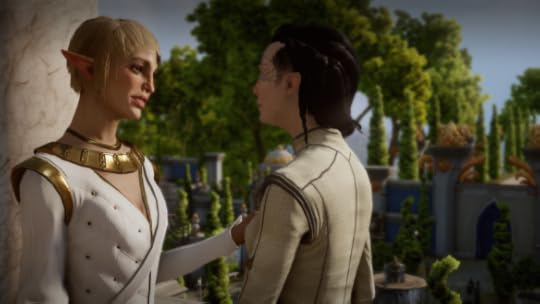 Sera’s romance is many things: turbulent, challenging, frustrating, inconsistent. But it’s not boring.
Sera’s romance is many things: turbulent, challenging, frustrating, inconsistent. But it’s not boring.
Just initiating the romance with Sera was an uphill battle — though to be fair I made it harder on myself by being a Dalish mage — and even once I did lock in her romance there was still plenty of challenge. Sera is a strange, volatile person. She’s not easy to get along with, or even understand. Between her rambling speech pattern and thick accent, you practically need a translator sometimes.
There’s also one particular scene in her romance that really pissed me off, just for its poor design. I had to basically pretend that scene never happened for the sake of my sanity. I think the developers realize they screwed up there, though — Trespasser also seems to pretend it never happened.
However, there’s still something immensely gratifying about Sera’s romance if you can dodge all the landmines and make it through. Sera seems a simple character at first, but in actuality she’s spectacularly complex. Once you finally understand her, all her seemingly crazy behaviour starts to make sense.
She’s also an incredibly sweet and loving character (even if she can have odd ways of showing it). For all its frustrations, Sera’s romance probably has more “d’aww” moments than any other I’ve done.
Nadia Grell (Star Wars: The Old Republic):
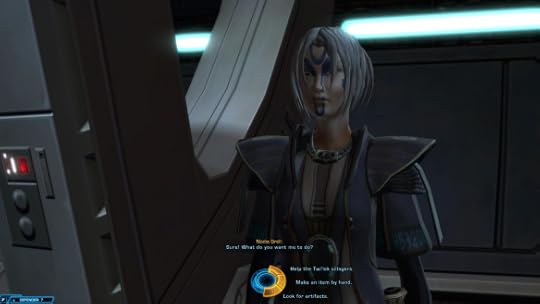 Nadia is a character I really enjoy. I know she can rub some people the wrong way, and I understand why — she’s very over-eager, and she does have a certain air of “Senpai noticed me!” that can be a bit much at times — but I can’t help but find her enthusiasm infectious.
Nadia is a character I really enjoy. I know she can rub some people the wrong way, and I understand why — she’s very over-eager, and she does have a certain air of “Senpai noticed me!” that can be a bit much at times — but I can’t help but find her enthusiasm infectious.
I also appreciate that she’s an idealist, but with a hard edge when the situation calls for it. She’s got a gentle heart, but she’s no push-over.
Yet that’s not why I’m giving her romance such high marks. The thing I find interesting about Nadia’s romance is that it seems more like she’s pursuing the player than the other way around. Normally in these games NPCs don’t display any interest at all until you’ve made a concerted effort to win them over. It made Nadia feel much more like a real person with agency all her own.
Plus it’s a pretty well-written romance all around. It’s got ups and downs and interesting choices to make, and you meet her pretty early in the game, so it feels natural to see the bond slowly grow between her and the player’s Jedi.
Merrill (Dragon Age II):
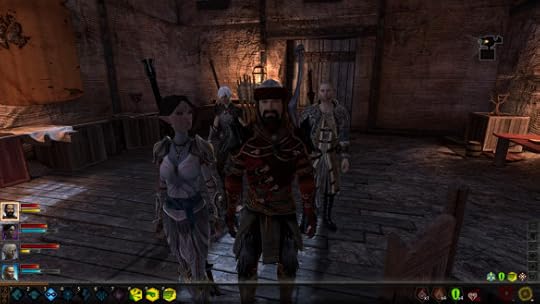 Merrill is a bit like Traynor in that she’s a character who could easily have been designed to appeal specifically to my tastes. A selfless, adorkable Elven blood mage with awesome tattoos and a charming accent? Sign me up.
Merrill is a bit like Traynor in that she’s a character who could easily have been designed to appeal specifically to my tastes. A selfless, adorkable Elven blood mage with awesome tattoos and a charming accent? Sign me up.
Unlike Traynor, though, her romance arc is very well-executed.
There’s a lot to like about Merrill’s romance. I appreciate that it’s a slow burn. You can start flirting with her almost immediately, but it takes a while for an actual relationship to form. That makes it feel a bit more natural than these things tend to.
I haven’t played DA2 without romancing Merrill, so I’m not sure how much a difference it makes, but certainly it seemed to have a significant impact on conversations with her. Even her party banter with other characters changed. Also, her moving into Hawke’s house was a nice touch.
As with Vette, Merrill’s life is so sad that it feels good to bring her some happiness. She’s such a nice person, and yet she ends up hated and distrusted by almost everyone. At least if you romance her, she has someone who stands by her. In fact I seem to recall some party banter where she says her relationship with Hawke is just about the only thing keeping her together.
And there’s just nothing to complain about in Merrill’s romance. There’s no blatant poor writing or obnoxious game design. It just works.
Filed under: Games Tagged: Dragon Age, fantasy, Mass Effect, sci-fi, Star Wars: The Old Republic, video games








October 19, 2016
SWTOR: A Knight of the Fallen Empire
I’m always so slow. I’ve finally gotten around to playing Knights of the Fallen Empire, and already it’s old news and everyone is talking about Knights of the Eternal Throne.
 Well, regardless, I finally made it to the expansion that initially inspired me to invest in Star Wars: The Old Republic against all odds. It’s Cipher Nine versus the endless armies of the Eternal Empire.
Well, regardless, I finally made it to the expansion that initially inspired me to invest in Star Wars: The Old Republic against all odds. It’s Cipher Nine versus the endless armies of the Eternal Empire.
Start all over again:
Although it is technically an expansion, in a lot of ways Knights of the Fallen Empire feels more like a sequel — SW:TOR 2. Although some familiar elements carry over, for the most part you’re starting an entirely new story with new characters, new locations, and new threats.
It actually bears a very close resemblance to another Bioware sequel: Mass Effect 2. In fact the opening of KotFE is almost an exact duplicate of the beginning of ME2, to the point where some of the cutscenes are basically shot for shot recreations of ME2’s.
The transition to the new story is… less than smooth. There’s some pretty serious retcons going on, and you’ll have to suspend your disbelief quite a lot, even by Star Wars standards. Even putting aside how far-fetched a lot of it is (again, even by Star Wars standards), it would still be jarring to abandon the conflict between Empire and Republic for this new battle against the Eternal Empire.
(Tangent: How many damn empires does Star Wars need? There’s the Sith Empire, the Infinite Empire, and now the Eternal Empire, and those are just the ones I know about. My knowledge of the greater Star Wars mythos is pretty shallow. At this point I wouldn’t be surprised to learn there are half a dozen other empires in there somewhere.)
 However, once you get past how jarring the change is, KotFE does start to look a lot better. The first nine chapters are incredibly tense and exciting. This was the first time in a very long time that a story — in any medium — has seemed so dire that I was truly at a loss as to how the heroes could ever prevail. The Eternal Empire is not a perfect antagonist faction by any means, but Bioware certainly sold their intimidation factor.
However, once you get past how jarring the change is, KotFE does start to look a lot better. The first nine chapters are incredibly tense and exciting. This was the first time in a very long time that a story — in any medium — has seemed so dire that I was truly at a loss as to how the heroes could ever prevail. The Eternal Empire is not a perfect antagonist faction by any means, but Bioware certainly sold their intimidation factor.
After chapter nine, things get a little more inconsistent.
The content in KotFE outside the main storyline certainly leaves a lot to be desired. I did one star fortress (twice, on both difficulties), and I do not understand what the point of these things is supposed to be. In theory I like the idea of solo dungeons, but in practice they’re just tedious. Like most of SW:TOR’s dungeons, they’re overloaded with endless swarms of tedious trash mobs, and their rewards are only marginally better than that of heroic missions — while being vastly more time-consuming.
Similarly, I did one or two alliance alerts, but quickly lost interest in the concept. I don’t see a compelling reason to trek all over the galaxy to recruit characters who have no connection to my agent and will likely never play a significant role in the story going forward.
Also, I would like to say I very much resent having to wait for a specific in-game event to reclaim one of my old companions. Even if the event comes around pretty often, it still leaves a bad taste in my mouth.
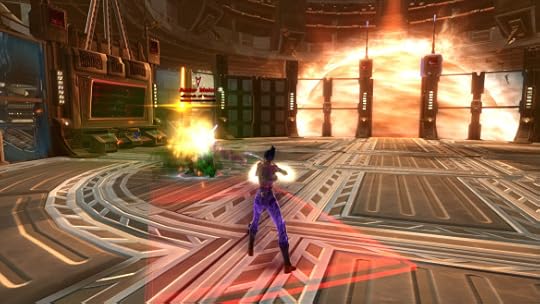 So it didn’t take me long to return to the main storyline. The upside to waiting this long to play the expansion was that I could do all the post-launch chapters in one go — probably the best way to experience them since they’re all quite short.
So it didn’t take me long to return to the main storyline. The upside to waiting this long to play the expansion was that I could do all the post-launch chapters in one go — probably the best way to experience them since they’re all quite short.
Here, again, we see shades of Mass Effect 2. A great deal of time is spent simply recruiting more companions (and wading through endless waves of the same generic mooks). In some ways this isn’t as annoying as it was in ME2, but in other ways it’s worse.
The good news is that recruitment isn’t the same grind in KotFE it was in ME2. There are fewer missions devoted entirely to recruitment — both by raw numbers and per capita — and even those that are pure recruitment still have at least some connection to the main story. So on the whole it’s not as annoying as it was in Mass Effect.
There’s a downside, though. The silver lining in ME2 was you got to have all kinds of awesome, deep conversations throughout the game with all the characters you were recruiting, but that isn’t the case here. In fact there are no conversations beyond those that make up the chapters themselves, and on the whole there’s surprisingly little character development for a Bioware game.
It also feels a bit pointless because most of the time you’re forced to use a specific companion for each chapter.
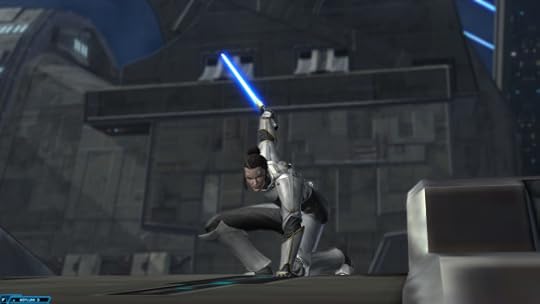 This is probably my biggest complaint about Knights of the Fallen Empire, honestly. They revamped the whole companion system to make it easier to use whichever one you want, and they built an entire expansion around collecting companions, and then they remove any ability to choose your companion for most of its content? Were the different departments at Bioware even talking to each other?
This is probably my biggest complaint about Knights of the Fallen Empire, honestly. They revamped the whole companion system to make it easier to use whichever one you want, and they built an entire expansion around collecting companions, and then they remove any ability to choose your companion for most of its content? Were the different departments at Bioware even talking to each other?
I grant that there are times where being locked into a specific companion makes sense for the story, but there are also plenty of times where it’s completely arbitrary and unnecessary.
I spent a fair bit of time and resources raising Lana’s influence and getting her a nice lightsaber crystal — my head full of romantic ideas of Cipher Nine and her love taking on the galaxy side-by-side — but I almost never got to use her for anything.
On that note, I should also point out that romances are fairly messed up. I would normally never say something like this, but if you haven’t played KotFE yet and are at all interested in romancing any of the new characters, I strongly recommend looking up some spoilers, especially as it relates to romances and chapter nine.
I very nearly missed out on Lana’s romance due to some mind-bogglingly bad design on Bioware’s part. The only reason I was able to salvage the situation was because I’d stumbled across some spoilers in the past and knew something was wrong when nothing happened at a specific point. With the aid of a kindly GM and a certain degree of luck, I was able to repeat the mission and fix things, but the Internet is full of no end of rage from those who weren’t so lucky.
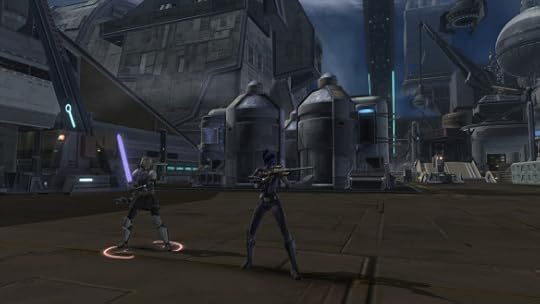 One final complaint is that this expansion leans very heavily on Force mysticism. Normally things being more fantastical wouldn’t be a problem for me, but it feels very awkward when you play a class that isn’t Force sensitive. Furthermore, one of the few story-telling sins SW:TOR shares with the films is that most of its Force mysticism consists of statements that sound profound at first but are revealed to be little more than meaningless blather the moment you start to analyze them.
One final complaint is that this expansion leans very heavily on Force mysticism. Normally things being more fantastical wouldn’t be a problem for me, but it feels very awkward when you play a class that isn’t Force sensitive. Furthermore, one of the few story-telling sins SW:TOR shares with the films is that most of its Force mysticism consists of statements that sound profound at first but are revealed to be little more than meaningless blather the moment you start to analyze them.
It should be clear by now there’s a fair bit I didn’t like about Knights of the Fallen Empire. However, it definitely wasn’t without its strong points.
The award for best chapter definitely goes to The GEMINI Deception. In terms of both story and gameplay, it provided the most thrills, the best twists, and the all around most satisfying experience. It was just generally awesome from beginning to end.
The final chapter was also pretty strong, and Profit and Plunder was another favourite. Partly because life is always better where it’s Vette-r, and partly because it allowed me to finally rid myself of a long-time thorn in my side.
Something I found very interesting about KotFE is its theme of trust. By necessity, you’re forced to ally with a lot of suspicious characters, and never knowing who to trust adds a lot to the already high tension of the story. As the plot plays out, it’s fascinating to see who ultimately betrays you and who turns out to be trustworthy after all.
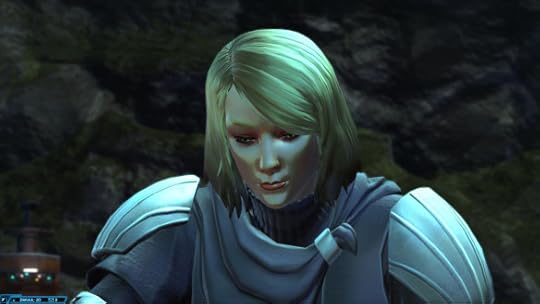 I wish I’d gotten to spend more time with her, but I still find Lana Beniko interesting. I’m having a very hard time nailing down what it is I like about her — she’s not the most immediately lovable or fun character. But there’s definitely something about her that’s fascinating.
I wish I’d gotten to spend more time with her, but I still find Lana Beniko interesting. I’m having a very hard time nailing down what it is I like about her — she’s not the most immediately lovable or fun character. But there’s definitely something about her that’s fascinating.
I think part of it is how she can be so cold and reserved most of the time… but every now and then the veneer cracks, just for a moment, and you get a glimpse of the person underneath. That’s gratifying.
Taken altogether, I did enjoy Knights of the Fallen Empire, but I expected better. After how amazing Ziost was and all the hype around this expansion bringing a redoubled focus on story, I was expecting something truly special. Instead, I got an expansion that was more good than bad but which offered plenty of both.
Eternal Throne isn’t so far off now, and I’m of the impression all its chapters will be released at once (I think?), so I’m thinking I’ll jump into it at launch. In the meantime, maybe I’ll do more class stories. I know I said I wasn’t interested in smugglers, but now I have a concept for one I like…
Filed under: Games Tagged: sci-fi, Star Wars, Star Wars: The Old Republic








October 16, 2016
BlizzCon 2016 Predictions
As has become my tradition, I’ve put together a collection of predictions for the upcoming BlizzCon, where the owners of my soul will announce the latest big updates coming to their games.
 The one difference this year is that instead of hosting my predictions on Superior Realities, I wrote them up for MMO Bro, so head on over if you want to see all the guesses I’m going to get wrong.
The one difference this year is that instead of hosting my predictions on Superior Realities, I wrote them up for MMO Bro, so head on over if you want to see all the guesses I’m going to get wrong.
Coming up with predictions this time was rather challenging. We’re flying blind going into this BlizzCon — much more so than usual. Everything is up in the air. The journalist in me is enjoying the mystery, but the gamer in me is nervous about the uncertainty.
I really want to see a Diablo expansion announcement and/or a story-mode for Overwatch, but both of those things are looking pretty unlikely right now.
We’re definitely getting something for StarCraft, and that’s one franchise that can’t seem to do wrong lately, so I should be excited for that, but it’s hard to get too hyped when we have so little idea what to expect. Obviously new story will always appeal to me the most, but that’s already been all but ruled out.
Most perplexing.
Filed under: Games, My writing Tagged: Diablo, fantasy, Hearthstone, Heroes of the Storm, Overwatch, sci-fi, Starcraft, video games, Warcraft, World of Warcraft, writing








October 13, 2016
Landmark: Build Two in Pictures
I’m still logging into Landmark now and then, though I have been pretty heavily distracted by other things (the main one rhymes with Morecraft). I did, however, finally get around to finishing my second, much more ambitious build. I actually wanted to blog about it sooner, but, again, distracted.
I think this is a case where a picture is worth a thousand words, so let me take you on a visual tour of the construction of the Vale of Whispers.
My initial plan had been to find a nice mountain valley and then tunnel into the surrounding cliffs, but I couldn’t find a valley that was the right size or shape, so eventually I threw up my hands and declared, “Screw it, I’ll build my own valley! With blackjack! And hookers!”
So I claimed a good chunk of a mountain and set to digging. Carving out a valley didn’t take too long…
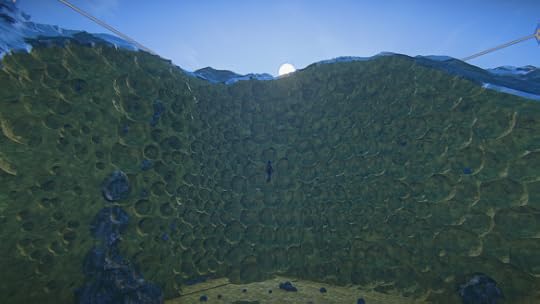 …But smoothing it and terraforming it to look natural became a pretty huge ordeal. I think it wound up being something like three or four hours of nothing but smoothing and tweaking the terrain. I did it in bits and pieces over several days, but even so, it was exhausting.
…But smoothing it and terraforming it to look natural became a pretty huge ordeal. I think it wound up being something like three or four hours of nothing but smoothing and tweaking the terrain. I did it in bits and pieces over several days, but even so, it was exhausting.
Once that ordeal was finally finished, the time came to start painting the terrain.
 By this point I had already spent many hours on build two, and I had only reached the point my first build had started from — a blank slate of terrain.
By this point I had already spent many hours on build two, and I had only reached the point my first build had started from — a blank slate of terrain.
 The next big task was to begin carving out a system of tunnels, which would house an academy of arcane study.
The next big task was to begin carving out a system of tunnels, which would house an academy of arcane study.
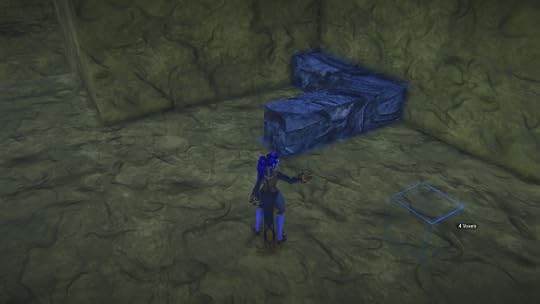
My method of measuring so the pillars would all be even with each other.
Stairs suck, let me tell you. You have to take it one step at a time — literally. I couldn’t copy and paste because I was digging into the native terrain rather than building something new. Maybe I should have just hollowed out the whole mountain and built the tunnels from scratch, but I’m not sure that would have been any less work in the end.
I thought I had some screenshots of my building the many stairways, but apparently not. So much the better — I’d rather burn the whole experience from my mind.
I did end up cheating and using teleporters in some places.
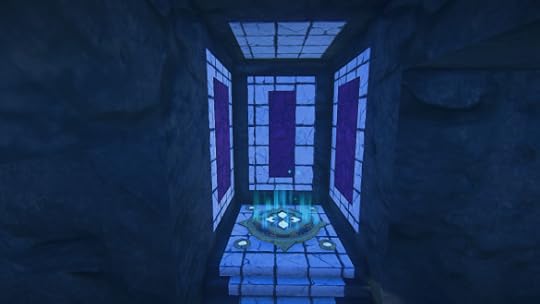 With the valley built, the basic terrain established, and the tunnels dug, I could finally turn my attention to the fun part: Making it pretty.
With the valley built, the basic terrain established, and the tunnels dug, I could finally turn my attention to the fun part: Making it pretty.
 And I populated the tunnels with ritual chambers…
And I populated the tunnels with ritual chambers…
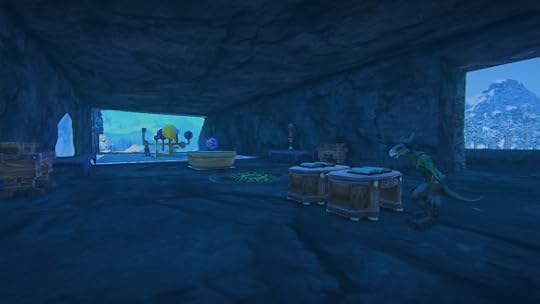
Unlike my first build, the NPCs in Vale of Whispers are friendly. Mostly.
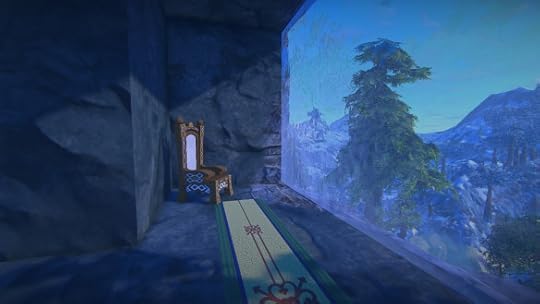 Now, at last, the whole thing is finished. I think I did bite off more than I could chew to some extent with such an ambitious build, and it was pretty exhausting after a while, but I am happy with the results.
Now, at last, the whole thing is finished. I think I did bite off more than I could chew to some extent with such an ambitious build, and it was pretty exhausting after a while, but I am happy with the results.
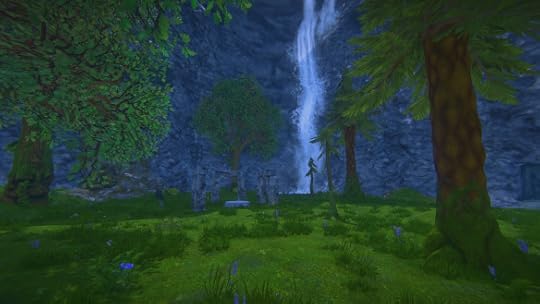 The Vale of Whispers turned out to match my original vision incredibly well. That’s one thing I can definitely say for Landmark: If you can imagine it, you can make it.
The Vale of Whispers turned out to match my original vision incredibly well. That’s one thing I can definitely say for Landmark: If you can imagine it, you can make it.
And I think it’s quite pretty, if I do say so myself.
 If you’re a Landmark player, I welcome you to visit. Look up Vale of Whispers in the gallery or walk down to the southern fjord on Lonely Glacier (Serenity).
If you’re a Landmark player, I welcome you to visit. Look up Vale of Whispers in the gallery or walk down to the southern fjord on Lonely Glacier (Serenity).
 And don’t forget to check out my first build, as well: Maigraith’s Grove, just southeast of the spire on Silver Shallows (Serenity).
And don’t forget to check out my first build, as well: Maigraith’s Grove, just southeast of the spire on Silver Shallows (Serenity).
Filed under: Games Tagged: fantasy, graphics, Landmark








October 10, 2016
Star Trek: Revisiting Old Favourites
Over the last few months, I’ve been rewatching my two favourite Star Trek series — The Next Generation and Enterprise — through a couple of streaming services. While I was once a rabid Trek fan, I have been rather vocal about leaving the fandom behind, and it’s been many years since I last watched any Trek.
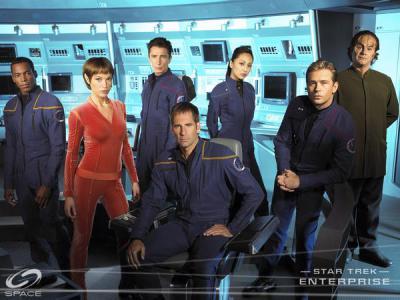 Nonetheless, my disillusionment with the franchise hasn’t fully extinguished the flames of my nostalgia. It’s been interesting to revisit both shows and look at them with new, more mature eyes.
Nonetheless, my disillusionment with the franchise hasn’t fully extinguished the flames of my nostalgia. It’s been interesting to revisit both shows and look at them with new, more mature eyes.
The Next Generation:
What struck more me than anything while rewatching TNG was that there is a shockingly high number of episodes ranging from mediocre to unwatchably bad, but that the good episodes are often astonishingly good. “The Drumhead” in particular stands out as an episode that is depressingly timeless.
I also began to realize just how much the series is carried by how amazing Patrick Stewart is. Nearly every episode that’s truly memorable features Picard prominently. The handful that remain are mainly Data episodes.
That’s not to say the rest of the crew is entirely dead weight. Worf definitely had his moments. I quite like Geordi, though for whatever reason most of the episodes that focus on him seem to be pretty lame. Even Troi got one or two good episodes, and Marina Sirtis deserves a fair bit of praise for her excellent performance in “Face of the Enemy.”
Still, the truth is that without Patrick Stewart and Brent Spiner TNG would have been a very forgettable series.
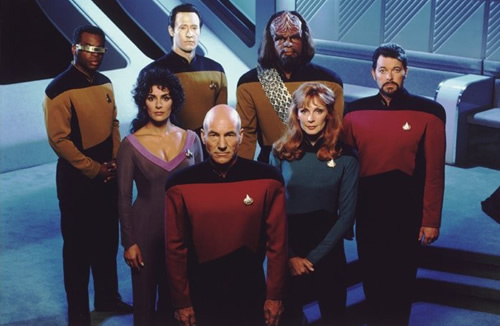 Also, Riker is a jerk. I never realized it before, but all he does for the entire series is scowl and yell at people.
Also, Riker is a jerk. I never realized it before, but all he does for the entire series is scowl and yell at people.
On the whole, my return to TNG showed me that all the episodes I remembered being good still were, but conversely it also reinforced my belief that Star Trek is a franchise that has mostly squandered its own potential.
Enterprise:
Ah, Enterprise. A series for which my passion once reached irrational heights. Revisiting it has definitely been an interesting experience.
Unfortunately the first two seasons of Enterprise have not stood the test of time as well as they might have. Partly it’s that the special effects — impressive in their day — are now showing their age, but the stories, too, are often not as good as I remember them being.
Mind you, Enterprise’s first two seasons still have a lot less truly bad episodes than TNG — “Acquisition” and “Precious Cargo” are the only ones I’ve outright skipped in my rewatch — but there’s a lot of mediocrity and a lot of forgettable episodes. “Cold Front” is notable for being the episode toward which my feelings have changed the most. I used to love it, but now I just think it’s a rambly, confusing mess.
 To be fair, there are definitely some good episodes in the first two seasons. “Broken Bow” isn’t as good as I remember it being, but it’s still a pretty respectable pilot. “Dear Doctor” and “The Breach” are still pretty good. “Detained” and “Stigma” are actually a lot better than I gave them credit for at the time — “Detained,” especially, is another depressingly timeless episode.
To be fair, there are definitely some good episodes in the first two seasons. “Broken Bow” isn’t as good as I remember it being, but it’s still a pretty respectable pilot. “Dear Doctor” and “The Breach” are still pretty good. “Detained” and “Stigma” are actually a lot better than I gave them credit for at the time — “Detained,” especially, is another depressingly timeless episode.
But on the whole my rewatch of seasons one and two left me underwhelmed.
As of right now, though, I’m nearing the end of season three, and it’s a different story.
I wasn’t sure the Xindi arc would hold up so well over time, but in fact I’m finding it remains incredibly impressive even after so many years and so many viewings. From “The Expanse” straight on through it’s a nearly flawless story full of tension, excitement, mystery, and emotion.
I think the trilogy of “Azati Prime,” “Damage,” and “The Forgotten” may well be the high water mark for the entire Star Trek franchise — at least in terms of raw emotion, anyway. Perhaps other parts of the franchise may be more intellectually stimulating, but nothing else is as powerful.
There’s so much that’s excellent within the Xindi arc — and in those three episodes especially — that I’m not even sure how to organize my thoughts. Do I talk about how shocking it was to see the heroes of the story so utterly helpless, so utterly defeated in “Azati Prime”? Do I expound upon the gut-wrenching power of Trip finally breaking down over the death of his sister in “The Forgotten”?
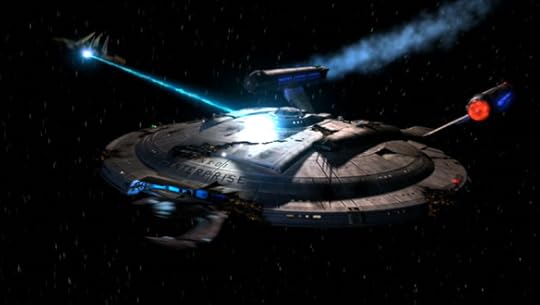 Rewatching these episodes, I’m realizing just how massive an influence they’ve been on my own writing, how much I’m trying to recapture some of the feelings Enterprise has instilled in me. You can see “Azati Prime” in the crushing losses I’ve handed my characters, and “The Forgotten” has left its fingerprints all over my story In Her Sister’s Pose.
Rewatching these episodes, I’m realizing just how massive an influence they’ve been on my own writing, how much I’m trying to recapture some of the feelings Enterprise has instilled in me. You can see “Azati Prime” in the crushing losses I’ve handed my characters, and “The Forgotten” has left its fingerprints all over my story In Her Sister’s Pose.
Season three even helps the first two seasons make more sense. Unlike the other Trek shows — except arguably DS9 — Enterprise has a clear theme and arc throughout. It’s about the innocence of humanity’s first steps into the stars, an infant race struggling to understand its place in the universe. In the first two seasons, the crew is full of a childlike wonder and joy, and in the Xindi arc, their innocence is ripped away, and they’re forced to mature — as we all are sooner or later.
It’s masterful.
The one other thing that has really struck me while rewatching Enterprise is just how amazing Jolene Blalock is. Phlox and Hoshi remain my favourite characters based on personal taste, but if I’m going to be objective, I think T’Pol is probably the best part of Enterprise.
Jolene Blalock is able to convey an incredible amount with very subtle shifts of body language and facial expressions. Despite her seemingly cold Vulcan demeanor, you can always tell exactly how T’Pol is feeling at any given moment, and when her veneer cracks, Ms. Blalock is able to portray the feelings beneath with an elemental fury that’s simply remarkable.
The end result is that T’Pol embodies the harsh reality of Vulcans: That they are not unemotional, but in fact hyper-emotional and fighting a constant internal war simply to be able to function.
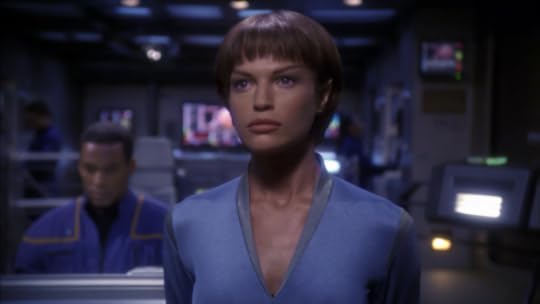 T’Pol was often ill-served by the writers. She was forced into far too many cheesy fan service scenes, and I have to say my rewatch has left me with a very poor view of the awkward and forced relationship between T’Pol and Trip — especially given the much better chemistry she had with Archer.
T’Pol was often ill-served by the writers. She was forced into far too many cheesy fan service scenes, and I have to say my rewatch has left me with a very poor view of the awkward and forced relationship between T’Pol and Trip — especially given the much better chemistry she had with Archer.
Nonetheless, even with those issues, I’d say Jolene Blalock’s brilliant performance assures T’Pol’s place as one of the brightest jewels in Enterprise’s crown.
On the whole, Enterprise is definitely flawed — more so than I remembered it being — but I think it remains the best incarnation of Star Trek to date.
Filed under: Games Tagged: sci-fi, Star Trek, TV








October 7, 2016
Why Don’t People Know StarCraft II Is Free?
The other day I was at a gathering with a bunch of gamers, all of them Blizzard fans, and many of them seemed surprised when I pointed out that StarCraft II is largely free to play. They had all been under the impression you needed to buy the game to play it.
 Then shortly afterward I was reading a post on the game’s official forums by someone hoping that Blizzard would make SC2 free to play with microtransactions. This is confusing, because it already is.
Then shortly afterward I was reading a post on the game’s official forums by someone hoping that Blizzard would make SC2 free to play with microtransactions. This is confusing, because it already is.
Right now, you can download the StarCraft II Starter Edition for free, and it will give you access to most of the game. You’ll be able to PvP as any race in any mode save ranked ladder. You’ll have full access to the Arcade, which is potentially a few thousand hours of gameplay on its own (there’s an entire MMORPG in there, for one thing), and you’ll be able to access the Galaxy Editor to mod and build games to your heart’s content.
While we’re at it, the Arcade also allows you to play the entirety of the campaigns from the first StarCraft and its expansion with updated HD graphics — again, all free.
You’ll also have access to co-op missions, a feature I’ve been singing the praises of for a while now. You will merely be restricted to the three basic commanders (Raynor, Kerrigan, and Artanis) unless you pay for Legacy of the Void or the standalone DLC commanders.
The only thing in SC2 you really miss out on by playing the Starter Edition is the campaign(s). You get a few sample missions, but most of the story remains locked unless you start ponying up for expansions or mission pack DLC. Still, given the large scale and high quality of StarCraft II’s story content, that hardly seems unreasonable.
 Essentially StarCraft II is a free to play game with microtransactions to expand your experience. Granted, the cost of expansion packs is greater than that of standard microtransactions, but you also get a lot out of them (20-30 mission campaigns plus ranked play and, in the case of Legacy of the Void, three co-op commanders).
Essentially StarCraft II is a free to play game with microtransactions to expand your experience. Granted, the cost of expansion packs is greater than that of standard microtransactions, but you also get a lot out of them (20-30 mission campaigns plus ranked play and, in the case of Legacy of the Void, three co-op commanders).
This is becoming even clearer with how much more the game is beginning to rely on DLC and microtransactions, including more paid co-op commanders — like the recently released Alarak and the upcoming Nova, who I’m almost embarrassingly excited to play — as well as unit skins and announcers.
In the face of that, it seems rather strange to me that most people are still under the impression that SC2 is a hard buy to play title.
I suppose the answer to the question in my header is simply that Blizzard hasn’t done much to advertise it. Normally a free to play transition is done all at once and accompanied by much fanfare, trailers, and developer press tours. SC2 did so in fits and starts, with the only mention of it being in a few articles on the game’s homepage.
Even so, one would expect word of mouth would have gotten the news out by now — this has been the case for years — but apparently not.
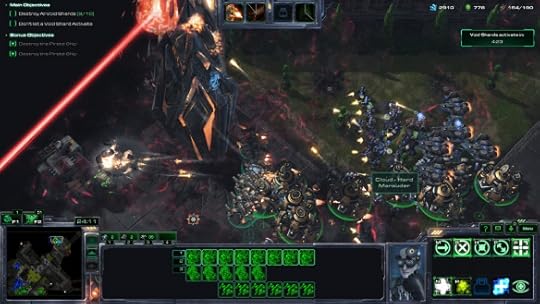 I grant the exact layout of the model is somewhat confusing due to its piecemeal nature and the large variance of costs and sizes between your potential purchases, but I wouldn’t think the fact that it’s not exactly like other free to play titles would prevent people from knowing that it is, in fact, mostly free.
I grant the exact layout of the model is somewhat confusing due to its piecemeal nature and the large variance of costs and sizes between your potential purchases, but I wouldn’t think the fact that it’s not exactly like other free to play titles would prevent people from knowing that it is, in fact, mostly free.
No matter what the forum doom and gloom crowd might say, the volume and quality of content SC2 has been getting lately clearly shows it’s anything but struggling, but still I’m left to wonder how much more popular it might be if more people realized that they don’t need to buy it.
Now, if you’ll excuse me, I need to get back to flailing like a muppet over the impending releases of the final Nova DLC and the ability to play her in co-op.
So much Nova.
Nooooooovaaaa.
Filed under: Games Tagged: sci-fi, Starcraft








October 4, 2016
TSW’s Hide and Shriek Seems Underwhelming
We have at last gotten an official announcement for The Secret World’s second spin-off, and huge TSW fan that I am, I should be over the moon about it… but I’m not.
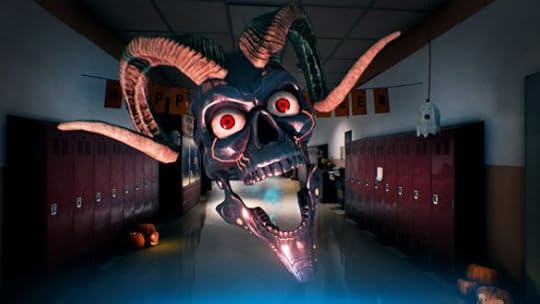 The new game is Hide and Shriek, a 1v1 PvP game where players attempt to literally scare each other to death with various traps and surprises.
The new game is Hide and Shriek, a 1v1 PvP game where players attempt to literally scare each other to death with various traps and surprises.
I can’t help but see this all as a waste of potential. If you ask people what makes TSW special, I really don’t think a lot of people are going to answer, “PvP,” and those that do would cite the build system as the reason for that, and Hide and Shriek won’t have that.
The appeal of The Secret World is its story and ambiance, and it seems like Hide and Shriek won’t have either. It’s still horror in a sense, but it’s horror based entirely on cheap jump scares, and the whole reason I admire TSW’s take on horror is that it doesn’t lean on cheap scares.
When I heard they were doing another spin-off, I was overjoyed, because I thought we’d be getting something like The Park — something to expand the story of the universe. The Park was an amazing experience. But instead we’re getting something closer to a TSW version of Overwatch — a mindless competitive arena that has only a tangential relationship to its own backstory.
I don’t even see it being a good marketing tool for TSW because they’re such different games. Despite the obvious mechanical differences between a combat-focused MMORPG and a combat-free walking simulator, The Park still ended up feeling a lot like TSW. If you played The Park before trying TSW, you’d find a lot that’s familiar to you in the style of story-telling and overall feel.
I can’t see that being the case for Hide and Shriek. If someone played Hide and Shriek and then tried TSW, I think they’d just be confused by how different they are. An intentionally cheesy, jump scare based PvP arena versus a subtle, ambient PvE RPG.
I’ve generally been of the opinion I’d be willing to throw money at anything with the TSW name, but that theory is about to put to the ultimate test, I think.
The only possible silver lining here is if they do a tie-in mission like they did for The Park. Given Hide and Shriek apparently uses Innsmouth Academy as one of its settings, this could be an excuse for new Innsmouth content in TSW. And that is always a good thing.
Filed under: Games Tagged: fantasy, Hide and Shriek, The Park, The Secret World








October 2, 2016
New Writing: Legion Worries and Alarak Impressions
I’ve had a few more articles published at MMO Bro over the last couple weeks.
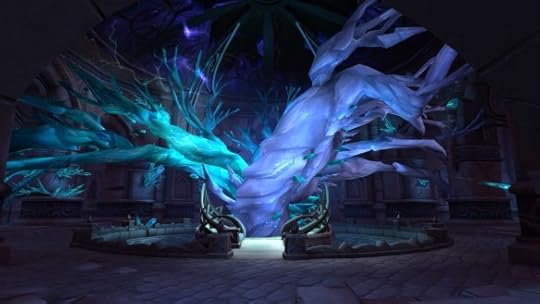 Firstly, I have a piece on my early impressions of World of Warcraft’s latest expansion, and while Legion is off to a promising start so far, I’m still worried for the future. It’s pretty clear that Blizzard still isn’t learning from its mistakes — or isn’t learning the right lessons from them at any rate.
Firstly, I have a piece on my early impressions of World of Warcraft’s latest expansion, and while Legion is off to a promising start so far, I’m still worried for the future. It’s pretty clear that Blizzard still isn’t learning from its mistakes — or isn’t learning the right lessons from them at any rate.
I’ve also taken a look at the new updates to StarCraft II’s co-op mode and given my impressions on Alarak as a playable commander and the surprisingly challenging new Mist Opportunities map.
Terrazine is a hell of a drug.
Filed under: Games, My writing Tagged: fantasy, sci-fi, Starcraft, World of Warcraft, writing








September 29, 2016
Under the Burning Skies: Suramar, World Quests, and Class Stories
I’ve now completed the new leveling content in Legion, and I’ve gotten two classes, warlock and rogue, to level-cap. For my final installment of Under the Burning Skies, I turn my eyes to the max level zone of Suramar, and to Legion’s take on endgame.
 Maigraith has been my “main” for endgame purposes so far, but for lore reasons, I’m doing Suramar on my warlock.
Maigraith has been my “main” for endgame purposes so far, but for lore reasons, I’m doing Suramar on my warlock.
Suramar:
Suramar is something pretty unprecedented in World of Warcraft, and I’m a little surprised I haven’t seen more discussion around that. Yes, we’ve had max-level zones before, but none of them have even come close to the scale of Suramar. I don’t think it would be an exaggeration to say that Suramar may well be the most ambitious piece of content in World of Warcraft’s history.
Suramar is vast, in every sense of the word. In both breadth and depth it could have been an entire game unto itself. And like many things in WoW, I have very mixed feelings on it.
On the one hand, I love Suramar. It’s a place we’ve known about in the lore for years but haven’t seen firsthand, which is exactly the experience I desire from WoW.
The zone itself is incredibly well-designed. The outer reaches are beautiful, but the city proper is where it really gets interesting. WoW has had cities before, of course, but they weren’t hostile territory, and they didn’t have anywhere near the scale or level of detail Suramar boasts.
 Even with all its fantasism, Suramar feels incredibly real. There are bookstores and jewelry shops and restaurants and parks. There are couriers running messages to and fro, and there are parents walking with their children.
Even with all its fantasism, Suramar feels incredibly real. There are bookstores and jewelry shops and restaurants and parks. There are couriers running messages to and fro, and there are parents walking with their children.
I’ve heard a lot of praise for the detail and realism of Black Desert’s cities and towns, but I have to say Suramar surpasses anything I saw during my (admittedly brief) stint in that game. It’s probably the most realistic and detailed city I’ve ever seen in a video game.
And of course it’s incredibly beautiful. Bioluminescent plants, artistic magic, and elegant architecture combine to create a haunting, ethereal beauty that’s just stunning.
The main story is also very strong from what I’ve seen so far. It’s not really a Blood Elf story, but it covers a lot of the same topics, so it feels appropriate for my warlock, and it appeals to me strongly.
I really think Warcraft as a franchise deserves more praise for how unique its magic system is. The concept of magic as an actual physical addiction is really fascinating.
 They’re really not pulling their punches with it this time, either. There’s an entire gameplay mechanic where the NPCs will go into withdrawal and become non-interactable until you get them a mana fix. You’ll even see them begin to shiver and pick at their skin, the way a real addict would. It’s brilliant, if disturbing.
They’re really not pulling their punches with it this time, either. There’s an entire gameplay mechanic where the NPCs will go into withdrawal and become non-interactable until you get them a mana fix. You’ll even see them begin to shiver and pick at their skin, the way a real addict would. It’s brilliant, if disturbing.
I’m very curious how people who’ve actually struggled with addiction feel about Warcraft’s portrayal of it. I have only the most distant familiarity with it myself (thankfully).
And the characters are very colourful and endearing, from Thalyssra’s endurance and nobility to Occuleth’s nutty professor persona. The voice acting for both those characters is really top-notch.
But there’s also a lot wrong with Suramar. Most notably, it is the time-sink of all time-sinks. I’ve already spent more time in Suramar than any of the leveling zones, and I’m not even halfway through.
Suramar has a lot of side quest chains outside the city, and I really don’t understand what the point of them was meant to be. Their gameplay is tedious, their stories forgettable, and their rewards paltry. Some of them are part of the Loremaster achievement for the zone and thus necessary for flying, but some aren’t, and there’s no way to tell which is which without playing through them.
 You could probably skip them on subsequent play-throughs, at least… if you can somehow muster the time and masochism to do Suramar more than once.
You could probably skip them on subsequent play-throughs, at least… if you can somehow muster the time and masochism to do Suramar more than once.
Even the main story, for all its strengths, can get a bit wearing at times. It’s enormous, and it doesn’t offer a lot of rewards or progression, so it often feels like you’re not getting anywhere. You’re also strongly encouraged to do all the Suramar world quests every day, since the non-repeatable quests offer very little of the reputation you need to complete the story, and that makes the whole thing into even more of a time-sink.
Even as someone with a lot of free time, even contributing all of my gaming time to Suramar, I still feel like I can’t keep up. Suramar will consume your entire life if you let it.
My goal had been to finish the zone before my subscription runs out in mid-October, but I’ve since learned that’s impossible because part of it requires you to kill the last boss of the Emerald Nightmare, and that doesn’t open for the raid finder until the end of October.
Initially this frustrated me, but now I’m kind of relieved, because it gives me an excuse to do something other than Suramar at least some of the time.
 This is what makes WoW so vexing. It’s not that Suramar is wonderful, and it’s not that it’s awful. It’s that it’s both of those things at the same time.
This is what makes WoW so vexing. It’s not that Suramar is wonderful, and it’s not that it’s awful. It’s that it’s both of those things at the same time.
World quests and endgame:
“I know what I hate, and I don’t hate this.”-C. Montgomery Burns.
I lump world quests and endgame as a whole together because they’re pretty inseparable in Legion. For a lot of people, including myself, world quests are going to form nearly the entirety of the expansion’s endgame.
So far, I’m finding Legion’s take on endgame to be a decided improvement over what we’ve seen in the last couple of expansions, but it does need to be said that’s a terribly low bar to clear.
I’ve seen a lot of praise for world quests themselves, but I can’t say I’m all that impressed with them myself. They’re pretty much the same daily quests we’ve been doing since Burning Crusade. There’s just a lot more of them.
 What does deserve some praise are emissary quests. Emissary quests appear every day and require you to complete any four world quests for the corresponding faction. Four world quests is a pretty quick goal to achieve, and while individual world quests aren’t always terribly rewarding, emissary quests are. They provide a big boost of reputation, a lot of order resources and/or gold, and often useful gear.
What does deserve some praise are emissary quests. Emissary quests appear every day and require you to complete any four world quests for the corresponding faction. Four world quests is a pretty quick goal to achieve, and while individual world quests aren’t always terribly rewarding, emissary quests are. They provide a big boost of reputation, a lot of order resources and/or gold, and often useful gear.
Thus, all you really “need” to do per day is your emissary quest, which takes very little time. You can keep grinding beyond that if you want, but there’s not a lot of pressure to. Emissary quests also last for three days, and you can bank up to three of them at once, so when and how you do them is pretty flexible.
The emissary/world quest grind isn’t the most exciting thing in the world, but it also doesn’t give one much cause for complaint. It’s nothing compared to how annoying endgame could be in Pandaria and Draenor.
Good thing, too, because it’s clear we’re going to have to do a lot of world quests over the course of the expansion. Literal hundreds.
I’m also finding gearing to be easier this time around — provided you don’t sucked into Suramar’s black hole, anyway. My rogue is already geared for Emerald Nightmare raid finder, and I wasn’t even trying. Normally getting geared at the beginning of an expansion is quite the slog.
 Not being able to fly is getting old real fast, though. Wouldn’t be such a problem if Blizzard wasn’t so insistent on cramming the world full of so many mobs you can’t move five feet without having to fight something irrelevant.
Not being able to fly is getting old real fast, though. Wouldn’t be such a problem if Blizzard wasn’t so insistent on cramming the world full of so many mobs you can’t move five feet without having to fight something irrelevant.
I’m also a little worried about heroic dungeons being irrelevant again. They can be worth doing if there’s a world quest for one that offers something you need, but otherwise they’re already feeling pretty unrewarding. And the expansion just started.
Too bad, too. Some are really good. I especially like Black Rook Hold and Maw of Souls, and the last boss of Vault of the Wardens is very neat.
Class stories:
As of this writing I’ve finished the class stories for both my max level classes. As with many things in WoW, they’re somewhat inconsistent experiences, but on the whole I’d put them in the win column.
They do have a fair bit of gating, but most of that gating comes in the form of stuff you’d probably do anyway, so while it seems like a grind on paper, it doesn’t feel that way in practice. It does need to be said, though, that without artificial gates in place, each class story would be the sort of thing you could finish in a day or two of light play at most.
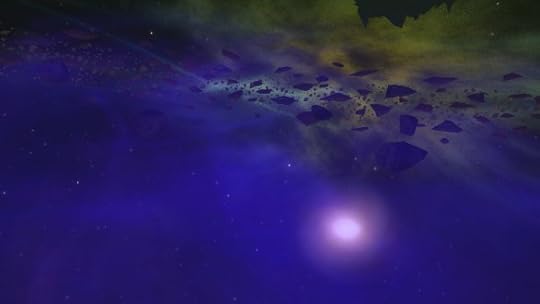 That said, while they lack quantity, they’re generally of a pretty high quality. The stories themselves are interesting and tend to sell the feel of the class very well.
That said, while they lack quantity, they’re generally of a pretty high quality. The stories themselves are interesting and tend to sell the feel of the class very well.
The endings are mostly what’s giving me mixed feelings. The rogue story’s climax was quite exciting, but it was also over very fast and a little too easy. The warlock ending was even worse. The climax of the entire story is to walk five feet and have a brief conversation with an NPC in your class hall.
That’s it. I’m not exaggerating. I couldn’t believe it at first.
It does make me wonder if Blizzard plans to continue the class stories later. The warlock one is pretty clearly unfinished. But then again the rogue story wrapped everything up pretty conclusively, so…
The good news is that the warlock story was so good up until its faceplant of an ending that I’m still inclined to look upon it favourably. I especially enjoyed how colourful the various characters were. I even grew to like Lulu Fizzlebang, despite my prejudice against Gnomes. Alone among all other Gnomes in the game, Lulu feels like a real, three-dimensional person, not just a ham-fisted Jar Jar-esque attempt at comedy.
Filed under: Games Tagged: epic nerd rant, fantasy, Warcraft, World of Warcraft









